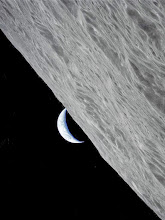 |
| Skull of Oreopithecus (Credit: After Szalay and Berzi, 1973) |
Fossil evidence suggest that early hominins (humans and their ancestors) such as Australopithecus also possessed a pad-to-pad precision grip.
In 1970, Clifford Jolly suggested that human manipulative capability may have paralleled those of the small object feeding gelada baboon (Theropithecus), a largely terrestrial East African primate that uses its pad-to-pad precision grip to feed on grasses and the seeds of grasses. Jolly suggested that such a folivorous diet in early hominin ancestors might also explain the reduction in hominin canine size.
But in 1977, marine biologist, Alister Hardy proposed an alternative hypothesis for the origin of the human pad-to-pad precision grip. He hypothesized that the hominin precision grip was originally an adaptation for the intensive exploitation of benthic invertebrates while wading bipedally in shallow water. In 1960, Alister Hardy suggested that the sensitive probing fingers of humans may have evolved in human ancestors adapted for the exploitation of shelfish and other benthic organisms. Hardy also proposed that bipedal wading for benthic organism was the selective reason for the evolution of obligatory bipedalism in the earliest hominins.
In 1999,
Oreopithecus has been vernacularly called the 'Swamp Ape' because of its apparent preference for swampy wetland environments. This late Miocene hominoid was also the earliest bipedal ape and lived in isolation from the European and African continents on an ancient Mediterranean island known as Tuscany-Sardinia. Rather abundant oreopithecine fossils have been found in lignite layers along with the fossil remains of freshwater mollusk, turtles, otters, and crocodiles (the possible predators involved in the deaths of the oreopithecine remains).
Feeding on aquatic vegetation is certainly not unusual in modern primates and has been observed in lemurs, chimpanzees, gorillas, baboons, the Colobus monkeys and, of course, in humans. Groups of Colobus monkeys have been known to descended from trees and to travel to pools of open water in swampy areas in order to feed on aquatic vegetation. Western Gorillas are also known to wade bipedally into swamps to feed on aquatic plants, sometimes even using walking sticks to stay erect.
 |
| Human pad-to-pad precision grip (Credit: Alister Hardy, 1977) |
The short legs of Oreopithecus along with its peculiar feet which exhibit a widely abducted hallux suggest that the swamp apes were less adapted for terrestrial locomotion than in the early African hominins. The short hindlimbs and the pedal tripod formed by widely abducted hallux and the deviated metatarsals of Oreopithecus appear to be designed as a stable platform for efficient postural harvesting which would have been advantageous for wading for food items in shallow aquatic environments.
While the cranio-dental evidence strongly indicates that Oreopithecus was intensely herbivorous, the unusual amount of wear on the canines and incisors in addition to the thickness of the central incisors which bear a number of small mammelons, may suggest that aquatic vertebrates were also included in their diets. As earlier noted, freshwater mollusks were abundant in the ancient wetland environments that Oreopithecus frequented. Oreopithecus also possessed a hominin-like pad-to-pad precision grip which they could have utilized to apprehend aquatic invertebrates while using their fingers, canines and central incisors to pry open and scrape out the edible flesh of the hard shelled freshwater bivalves.
Sometime after 7.4 million years ago, sea levels began to fall in the Mediterranean creating land bridges to North Africa. Global sea levels fell to such an extent that eventually the Mediterranean Sea became completely isolated from in the inflow of marine waters from the Atlantic Ocean 6.1 million years ago.
The earliest African hominin, Sahelanthropus, appeared in the fossil record in North Africa sometime between 6.8 and 7.2 million years ago. While not much is known about the postcranial remains of Sahelanthropus, its craniodental morphology is remarkably similar to that of Oreopithecus bambolii.
Aquatic foraging in the wetland swamps of Tuscany-Sardinia would, therefore, explain the adaptive value of bipedal behavior, pad-to-pad precision grips and intense folivory in Oreopithecus and the origins of obligatory bipedalism, precision grips, and hyper-mastication in hominin evolution. And this would appear to be further evidence that Oreopithecus was the earliest bipedal human ancestor.
Was the Swamp Ape Bipedal?
Our Earliest Ancestor





















1 comment:
Unlike brachiating, where long hook-like hands are advantageous, coconut palm or giant reed climbing doesn't select against pad to pad precision grip.
https://youtu.be/QARuWJjZkmw
Post a Comment